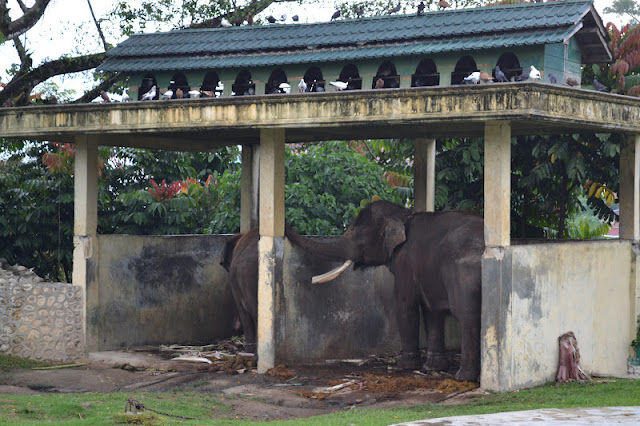Bukittinggi is a buzzing, beguiling town in the Minangkabau Highlands of West Sumatra ringed by lush terrain and volcanoes (one of which, Mt. Merapi, is active). The city itself is left in a perpetual haze by the smoking giant and is a picture of a thousand contrasts as teens dashing off text messages on speeding motorbikes fly past ornate Minangkabau buildings adorned with buffalo-horn rooftops.
After arriving on a hellish, 18-hour bus journey, we settled into the first hotel we found that had vacancy (which was a journey in itself) and hit the streets to stretch our legs.
We wandered through the town. Up and down slopes, in and out of shops, and through the misty, rain-slicked streets.
The Minagkabau people of West Sumatra are the world's largest remaining matrilineal society (numbering about five million). Property and homes are inherited by the female side of the family and despite the heavy Islamic influence (brought by Acehnese merchants in the 17th century) on Minang culture, women still maintain a powerful position in society. They control the selection process for village chiefs and married men still must leave their wife's bed at daybreak to go and eat breakfast at his mother's home. Here, religion and traditional customs carry on a working relationship.
The remnants of colonial architecture can still be found in less-trodden sidestreets. During the 19th century, the city was known as Fort De Kock and was a Dutch hill-station centered around farming and gold-mining.
The remnants of Fort De Kock, once ringed by cannons, now houses a public park and a depressingly ill-kept zoo, where we snapped photos of the fauna, the flora, and the locals.
These Minang girls were all freshmen in university and keen to show off their English skills. As conservative Islam has gathered steam in recent years, young women are now eschewing the traditional Minang style of a simple scarf for the better coverage provided by the Malay style.
The poor conditions at the zoo were a bit jarring, but like most zoos in Southeast Asia, one should take in the experience with a degree of equanimity.
The Minangkabau Museum, designed like a traditional village meeting-house, has some cultural exhibits.
The world-renowned Bukittinggi aquarium is found in the belly of this beast.
This pelican avoided the cruel rain by burying his beak deep down into his feathers.
The drizzle changed into a downpour and the camera went into hiding as we marched off to dinner and a long-awaited sleep in a real bed.





















No comments:
Post a Comment